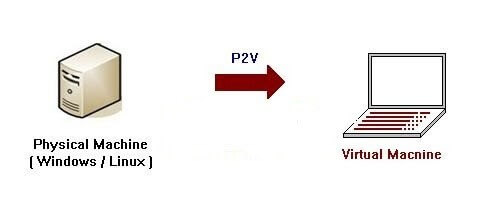How to Migrate Physical Machine to Hyper-V
Gap updated on Jul 02, 2024 to Todo Backup Guide | How-to Articles
In recent years, the term P2V (Physical-to-Virtual) has gained significant attention as an increasing number of businesses shift towards cloud-based solutions. But why is P2V so crucial for enterprise users, how can one perform P2V, and is there any way to avoid tedious and laborious work during the process?
This article delves into the definition of P2V, various methods for P2V, a comparison among three primary methods, and introduces the best software, EaseUS Todo Backup Workstation, to help you migrate your physical machine to a Hyper-V virtual machine easily and efficiently.
The abbreviation P2V stands for Physical to Virtual, also known as hardware virtualization. As an increasing number of businesses shift towards cloud-based solutions, the process of migrating physical servers to virtual machines has become crucial for enterprise users. P2V migration involves converting physical server hardware into virtual machines that can be centrally managed and accessed.

1. Easy to manage and flexible to adjust
Managing virtual machines is easier than physical hardware, as it only requires clicking icons and selecting options instead of manual examination and replacement.
Virtualization helps businesses reduce hardware costs, physical space, and potentially energy costs. It also provides greater flexibility in managing server resources and workloads, simplifying maintenance, and streamlining IT operations by centralizing resources.
2. Provide an authentic test environment
Virtualization offers a completely realistic environment for thoroughly testing new components or code, including potentially hazardous changes, before deploying them in a live setting.
3. Alleviate even eliminate downtime
If the hardware hosting a virtual machine fails, the virtual machine can be relocated to a functioning server with minimal downtime. Virtual machines are not tied to any specific physical component, enabling them to be migrated as needed.
Currently, there are three main methods for performing P2V, which can be categorized by their level of automation: manual, semi-automated, and fully-automated.
1. Manual P2V: Involves manually recreating the physical server's configuration on a new virtual machine, including installing the operating system, and applications, and transferring data.
2. Semi-automated P2V: Combines the use of specialized tools and manual processes to migrate the physical server to a virtual machine.
3. Fully-automated P2V: Uses specialized software tools to automate the entire migration process, including system configuration, data transfer, and virtual machine setup.
Hyper-V is a popular choice for enterprise users due to its seamless integration with Microsoft products, compatibility with various operating systems, and exceptional performance and scalability for virtual machines.
In this section, we will demonstrate how EaseUS Todo Backup can migrate the physical server system to a Hyper-V virtual machine in just a few simple steps.
1. Use System Backup feature to back up your physical machine.
2. Create an Emergency Disk with Todo Backup.
3. Boot the hyper-V virtual machine from the emergency disk and enter the WinPE environment with Todo Backup.
4. With the Todo Backup in the WinPE environment, choose System Transfer to start the restore process.
Here is an example of choosing the image file from the NAS device.
5. Restore finished, the physical PC has been migrated to the Hyper-V successfully.
1. How to import using Hyper-V Manager?
To import a virtual machine:
2. How to check if a machine is physical or virtual?
1. Check System Tray
The quickest method to determine if you are using a virtual machine is to check the system tray. Typically, you will find an icon for utilities provided by the virtualization product's manufacturer to enhance the performance of the guest operating system.
2. Check Programs and Features in Control Panel
Another method is to check the Programs and Features in the Control Panel. Virtualization software may be listed here.
3. Check System Information
Click Start → Type "msinfo32" → Press Enter
The System Manufacturer and System Model items will help you determine whether the machine is physical or virtual.
4. Use Command Prompt
Enter this command in the command prompt: systeminfo /s %computername% | findstr /c:"Model:" /c:"Host Name" /c:"OS Name"
This will display information about the system model, hostname, and operating system, which can help you determine if you are using a virtual machine.
Related Articles
Best 5 Windows Server Backup Software for 2024
How to backup system with EaseUS Todo Backup
How to Install Windows 11 ISO on VirtualBox